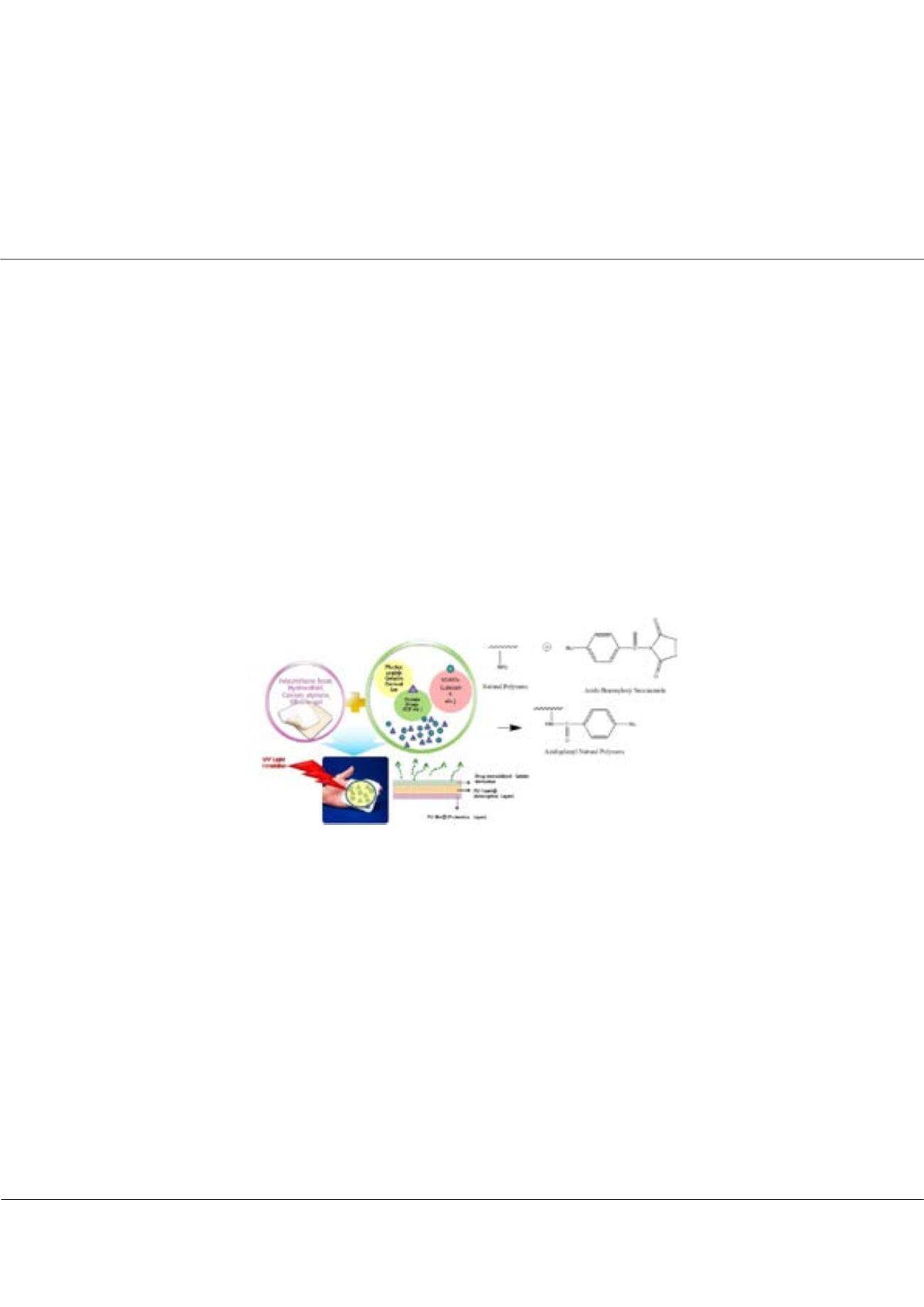

Page 89
conferenceseries
.com
Volume 8
Journal of Biotechnology and Biomaterials
ISSN: 2155-952X
Biomaterials 2018
March 05-06, 2018
March 05-06, 2018 | Berlin, Germany
3
rd
Annual Conference and Expo on
Biomaterials
Stabilization of protein–drugs (EGF/TGF- β/Bmp-2) by photoreactive natural polymer
Tae-il Son
1
, Eun Hye Kim
1
, Ga Dug Han
1
, Seung Hyun Noh
1
, Jae Won Kim
1
, Shin Woong Kim
1
, Tae Hoon Lee
1
, Sung Jun Min
1
and
Yoshihiro Ito²
1
Chung-Ang University, Republic of South Korea
2
RIKEN, Japan
B
ioactive molecules such as EGF, TGF-β, BMP-2, are very important and useful materials in medical field; regenerative
medicine and pharmacy. Immobilization method is one of current researching to overcome low stability and high cost
of bioactive molecules. Chemical methods have been used widely for immobilization of bioactive molecules. However, there
are some of drawbacks with this method. For example, chemical method may produce potential toxic by-product, and, in
case of physical method, low efficiency of immobilized bioactive material is observed. To solve these problems, recently, the
immobilization by photo-immobilization has been researched widely. The advantages of photo-immobilization are 1) high
selectivity of chemical reactions or processes under mild conditions (ambient temperature of also much below), 2) typically no
need for added catalysts or special solvents, 3) spatially addressable effects (2D and 3D structuring possible) and 4) applicable
to very small and (relatively) large scales. To use for photo-immobilization, various natural polymers, such as gelatin, chitosan,
hyaluronic acid reacted by irradiation to UV or visible light can be applied for medical area to increase biocompatibility and
functionality, for example, coating agent for bioinert devices like stent and implant, anti-adhesive agent, wound dressing and
bio-adhesive.
Figure: Immobilization of protein drugs
Recent publications
1. Tae Il Son et al. (2010) Visible light-induced crosslinkable gelatin (2010) Acta Biomaterialia. 6 (10):4005-4010.
2. Kwang Il Kim et al. (2010) Preparation of photo-reactive azidophenyl chitosan derivative for immobilization of growth
factors. Journal of Applied Chemical Science. 117(5):3029-3037
3. Ha Na Na et al. (2010) Synthesis of O-carboxylated low molecular chitosan with azido phenyl group: its application for
adhesion prevention. Macromolecular research. (18):1001-1007.
4. Young Gi Lee (2008) Thermally crosslinked anionic hydrogels composed of poly(vinyl alcohol)m and poly(c-glutamic
acid): preparation, characterization, and drug permeation behavior. Journal of Applied Polymer Science. 109:(6):3768-
3775.
Biography
Tae-il Son was awarded the degree of PhD by Tokyo Institute of Technology, Japan in 1989. He is a Professor in the Department of Systems Biotechnology, Chung-
Ang University and a Visiting Scholar at RIKEN (2007). He has served as President of the Korean Society for Chitin and Chitosan. He is currently the Director of
Biomaterial Field in the Korean Society of Industrial and Engineering Chemistry (KSIEC) in Korea. He has published more than 100 papers in reputed journals.
tisohn@cau.ac.krTae-il Son et al., J Biotechnol Biomater 2018, Volume 8
DOI: 10.4172/2155-952X-C1-088
















